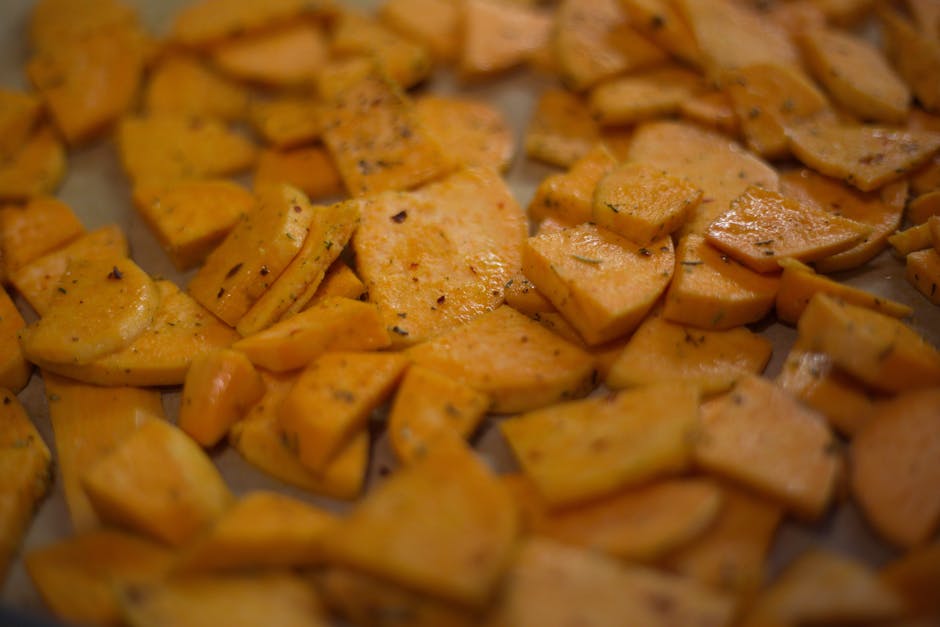Creamy potato salad, a beloved staple at picnics, barbecues, and potlucks across the globe, boasts a surprisingly rich and complex history. While pinpointing its exact origin is difficult, many culinary historians trace its roots back to 19th-century Germany, where potato salads, often featuring a vinaigrette or mayonnaise-based dressing, were already a common dish. The migration of German immigrants to the United States during this period is widely credited with introducing, and subsequently popularizing, the dish within American cuisine. Early versions differed significantly from the creamy rendition we know today, often relying on simpler dressings and a more rustic preparation. The widespread adoption of mayonnaise in the early 20th century, however, played a pivotal role in transforming the salad into the creamy, comforting side dish we enjoy today.
The evolution of creamy potato salad is intrinsically linked to the changing culinary landscape of America. The rise of mass-produced mayonnaise in the early 1900s made this richer, creamier version accessible to a wider population, solidifying its place in American cookouts and family gatherings. Its popularity is undeniable; statistics show that potato salad consistently ranks among the top five most popular side dishes at summer events, with millions of pounds of potatoes consumed annually in its preparation across the country. Interestingly, regional variations abound, with some families favoring a tangier vinegar-based dressing while others swear by the creamy richness of a mayonnaise-only base. This diversity reflects the adaptability of the recipe and its seamless integration into various cultural contexts.
Beyond its simple ingredients, creamy potato salad holds significant cultural weight, particularly in the United States. It’s a dish that transcends socioeconomic boundaries, appearing on tables at both elaborate feasts and casual backyard gatherings. It’s a symbol of comfort food, often evoking nostalgic feelings of family reunions, summer vacations, and childhood memories. Furthermore, the dish’s adaptability allows for endless customization, reflecting the personal preferences and culinary traditions of individual families and regions. From the addition of hard-boiled eggs and celery to the incorporation of mustard, bacon, or even pickles, the variations are as numerous as the families who prepare it, making each bowl a unique reflection of its creator’s heritage and taste.
Ingredients and Measurements
This recipe yields approximately 6-8 servings of creamy potato salad. Accurate measurements are crucial for achieving the perfect balance of flavors and textures. Use a kitchen scale for the most precise results, especially when measuring potatoes and mayonnaise.
Potatoes: 2 pounds Yukon Gold potatoes, or a similar variety with a creamy texture. Avoid using waxy potatoes like red potatoes, as they tend to hold their shape too well and won’t create the desired creamy consistency. Peel the potatoes completely before cutting them into roughly 1-inch cubes. Smaller cubes will cook faster, ensuring even cooking throughout.
Mayonnaise: 1 cup mayonnaise. The quality of your mayonnaise significantly impacts the final taste. Choose a high-quality mayonnaise with a good balance of tang and richness. Consider using a homemade mayonnaise for an even more elevated flavor profile. You can adjust the amount slightly based on your preference for a creamier or slightly less creamy texture.
Celery: 1/2 cup finely chopped celery. Celery adds a refreshing crunch and subtle savory note. Ensure the celery is very finely chopped to avoid large, unpleasant pieces in the final salad. Overly large pieces can also affect the overall texture.
Onion: 1/4 cup finely chopped red onion. Red onion provides a nice bite and vibrant color. If you prefer a milder flavor, you can use white onion instead. Soak the chopped onion in cold water for 10-15 minutes before adding it to the salad to reduce its sharpness. Drain well before incorporating.
Hard-boiled Eggs: 3 large hard-boiled eggs, finely chopped. Hard-boiled eggs add protein and a rich, creamy texture to the potato salad. Ensure the eggs are completely cooled before chopping to prevent them from becoming gummy. For easier peeling, submerge the eggs in ice water immediately after boiling.
Mustard: 1 tablespoon Dijon mustard. Dijon mustard lends a tangy flavor that complements the richness of the mayonnaise. You can experiment with different mustards, such as yellow mustard or whole grain mustard, to personalize the flavor.
Seasoning: 1 teaspoon salt, 1/2 teaspoon black pepper, 1/4 teaspoon paprika (optional). Adjust the seasoning to your taste. Taste the potato salad before serving and add more salt and pepper as needed. Paprika adds a subtle smoky flavor and a vibrant color.
Optional additions: Consider adding chopped dill pickles, fresh parsley, or a dash of celery seed for additional flavor and texture. Remember to adjust the quantities to your liking.
Equipment List
Creating a perfectly creamy potato salad requires the right tools. While you might be able to improvise with some items, having the correct equipment ensures efficient and consistent results. This list details the essential tools, along with recommendations for optimal performance.
Large Pot (8-quart minimum): You’ll need a spacious pot to comfortably boil the potatoes. An 8-quart pot is ideal for a standard batch, allowing ample room for the potatoes to cook evenly without overcrowding. A smaller pot might lead to uneven cooking and potential sticking.
Potato Ricer or Food Mill (optional, but highly recommended): While you can mash potatoes with a fork or potato masher, using a ricer or food mill produces an exceptionally smooth and creamy texture. This is crucial for achieving that truly luxurious potato salad consistency. A ricer pushes the potatoes through a sieve, creating a light and airy texture unlike any other method.
Mixing Bowls (at least two, various sizes): You’ll need one large bowl (at least 5-quart capacity) for combining all the ingredients, and a smaller bowl for preparing the dressing separately. Using separate bowls helps maintain cleanliness and prevents accidental contamination of flavors.
Whisk: A whisk is essential for thoroughly blending the dressing ingredients to create a smooth and emulsified sauce. A balloon whisk is preferred for its efficient whisking action, ensuring a perfectly creamy texture for your potato salad dressing.
Measuring Cups and Spoons: Accurate measurements are key to achieving the desired flavor balance in your potato salad. Invest in a reliable set of measuring cups and spoons to ensure consistent results. Use dry measuring cups for dry ingredients and liquid measuring cups for liquids for accurate measurements.
Wooden Spoon or Spatula: A sturdy wooden spoon or spatula is ideal for gently folding the dressing into the potatoes. Avoid using metal utensils, as they can cause discoloration of the potatoes. Gentle folding prevents over-mixing and maintains the integrity of the potatoes, resulting in a more appealing texture.
Colander: A colander is necessary for draining the cooked potatoes. Choose a colander that is large enough to comfortably hold the cooked potatoes. It’s essential to drain the potatoes thoroughly to prevent a watery potato salad.
Serving Bowl: Finally, you’ll need an attractive serving bowl to showcase your delicious creamy potato salad. The size should be appropriate for the amount of potato salad you’ve prepared.
Potato Preparation (Washing, Peeling, Chopping)
The success of your creamy potato salad hinges on perfectly prepared potatoes. Begin with approximately 2 pounds of starchy potatoes, such as Russet or Idaho, for a classic potato salad texture. Avoid using waxy potatoes like red potatoes, as they tend to become mushy when cooked.
First, thoroughly wash the potatoes under cold running water. Use a vegetable brush to scrub away any dirt or debris clinging to the skin. Removing all soil is crucial for a clean and safe final product. Pay particular attention to any crevices or imperfections on the potato surface.
Next, peel the potatoes. You can use a vegetable peeler for efficient peeling. Some recipes call for leaving the skins on, which adds texture and nutrients. However, for a classic creamy potato salad, peeling is generally preferred. Aim for even peeling to ensure uniform cooking and a consistent texture throughout the salad. Discard the potato peels.
Now, it’s time to chop the potatoes. The size of your potato pieces will affect cooking time and the final texture of the salad. For a creamy potato salad, aim for uniformly sized pieces, roughly 1-1.5 inches in diameter. Consistency in size ensures even cooking, preventing some pieces from becoming overcooked while others remain undercooked. Using a sharp knife will make this task easier and safer.
Once chopped, rinse the potatoes briefly under cold water to remove any excess starch. This step helps prevent the potatoes from becoming gummy or sticky during cooking. This rinse is important for optimal texture and prevents a gluey consistency. Then, you’re ready to proceed with boiling the potatoes for your creamy potato salad.
Professional Tip: Soaking the peeled and chopped potatoes in cold water for 15-20 minutes before boiling helps to remove even more starch, resulting in a lighter, fluffier texture in the final salad. This step is optional but highly recommended for achieving the best possible results.
Boiling the Potatoes
The key to a fantastic creamy potato salad lies in perfectly cooked potatoes. We’ll be using 2 pounds of Yukon Gold potatoes for this recipe, renowned for their creamy texture and buttery flavor. Avoid using starchy potatoes like Russets, as they can become mushy when boiled.
Begin by thoroughly washing the potatoes. No need to peel them; the skins add flavor and nutrients. Cut the potatoes into roughly 1-inch cubes. Uniformly sized pieces ensure even cooking; otherwise, some pieces will be overcooked while others remain underdone. This is crucial for a consistent texture in your final salad.
Place the cubed potatoes in a large pot and cover them generously with cold water. Add about 1 tablespoon of salt to the water. This helps season the potatoes from the inside out and prevents them from becoming watery. Bring the water to a rolling boil over high heat.
Once boiling, reduce the heat to medium-low and simmer for 12-15 minutes, or until a fork easily pierces the center of a potato without resistance. Do not overcook the potatoes; they should be tender but still hold their shape. Overcooked potatoes will fall apart and result in a mushy salad.
To check for doneness, carefully remove a potato cube from the pot and pierce it with a fork. If it offers minimal resistance and easily flakes apart, they are ready. If they are still firm, continue simmering for a few more minutes, checking every couple of minutes to avoid overcooking. It’s better to slightly undercook than overcook the potatoes, as they will continue to cook slightly from the residual heat even after removing them from the pot.
Once cooked, immediately drain the potatoes in a colander. Rinse them briefly under cold water to stop the cooking process and prevent them from becoming gummy. Allow the potatoes to cool slightly before adding them to the other ingredients. This prevents the other ingredients from becoming overly warm and potentially wilting.
Now that your potatoes are perfectly boiled, you’re ready to move on to the next exciting step in creating your creamy potato salad!
Making the Dressing
The creamy dressing is the heart and soul of a great potato salad, so take your time and get it just right! We’ll be making a classic mayonnaise-based dressing, but feel free to experiment with different additions later on.
Begin by measuring out your ingredients precisely. This ensures a perfectly balanced flavor profile. You’ll need:
- 1 cup mayonnaise (Use a good quality mayonnaise for the best flavor.)
- 1/4 cup yellow mustard (Dijon mustard can also be substituted for a sharper taste.)
- 2 tablespoons white wine vinegar (Apple cider vinegar is a delicious alternative.)
- 1 tablespoon sugar (Granulated sugar works best here.)
- 1 teaspoon celery seed (Don’t skip this! It adds a wonderful savory note.)
- 1/2 teaspoon onion powder
- 1/4 teaspoon black pepper
- 1/4 teaspoon salt (Start with less and adjust to taste, as saltiness can vary between brands of mayonnaise.)
In a medium-sized bowl, whisk together the mayonnaise, mustard, vinegar, sugar, celery seed, onion powder, pepper, and salt until completely smooth and well combined. Make sure there are no lumps of mustard or sugar remaining. A whisk works best for this, but a fork will also do the job.
Taste the dressing and adjust the seasoning as needed. You might want to add more vinegar for tanginess, sugar for sweetness, or salt and pepper to taste. Remember, you can always add more, but you can’t take it away!
Once you’re happy with the flavor, set the dressing aside. It’s best to let the flavors meld for at least 15-30 minutes before adding it to the potatoes. This allows the flavors to develop and create a more cohesive and delicious dressing.
For an extra touch of richness, consider adding a finely chopped hard-boiled egg or a spoonful of sour cream to the dressing. Experiment and find what works best for your palate!
Combining Ingredients
Once your potatoes are cooked and cooled, and your other ingredients are prepped, it’s time to bring this creamy potato salad together. This stage requires gentle handling to prevent the potatoes from becoming mushy and to ensure even distribution of flavor.
Begin by placing the perfectly cooled potatoes in a large mixing bowl. We’re aiming for room temperature or slightly cooler; warm potatoes will melt the dressing too quickly, resulting in a soggy salad. Cut the potatoes into bite-sized pieces, if you haven’t already done so. Aim for roughly 1-inch cubes – this ensures even cooking and prevents overly large chunks.
Next, add your hard-boiled eggs. These should be chopped into roughly 1/4-inch pieces. Smaller pieces distribute more evenly throughout the salad, creating a delightful surprise with every bite. Overly large chunks can make the salad uneven in texture.
Now, incorporate the onions. I recommend using 1/2 cup of finely diced red onion for a vibrant color and subtly sharp flavor. If you prefer a milder onion flavor, you can use white or yellow onion, but be sure to soak them in cold water for 10-15 minutes to reduce their pungency. Thoroughly drain before adding to the salad.
Celery adds a welcome crunch. Use about 1/2 cup of finely diced celery. Again, small pieces are key for even distribution and to prevent an overwhelming celery taste. Adjust the quantity to your preference; some people love the celery flavor, while others prefer a more subtle presence.
Now, it’s time for the dressing! This is a crucial step. Gently fold in your creamy mayonnaise-based dressing (recipe should be detailed elsewhere in this guide). Start by adding about 2/3 of the dressing and gently toss the potatoes and other ingredients to ensure everything is lightly coated. Taste and add the remaining dressing, if needed. Avoid over-mixing; this can break down the potatoes and make the salad less appealing.
Finally, gently stir in any additional seasonings, such as salt, pepper, paprika, or dill. Taste and adjust seasonings to your preference. Remember that flavors meld better over time, so it’s better to err on the side of slightly under-seasoning initially and adjust later if needed. Allow the salad to rest in the refrigerator for at least 30 minutes, or preferably longer, to allow the flavors to fully develop. This allows the potatoes to absorb the dressing and the flavors to marry perfectly.
Tip: For a truly exceptional potato salad, consider adding a touch of Dijon mustard or a squeeze of lemon juice to the dressing. These additions add depth and complexity to the flavor profile.
Recommendations for Creamy Potato Salad
For the creamiest, most flavorful potato salad, use Yukon Gold potatoes. Their naturally buttery texture and slightly sweet taste are perfect for this dish. Avoid waxy potatoes as they tend to become gummy when cooked.
Don’t overcook the potatoes! They should be tender but not mushy. Slightly undercooking them will allow them to finish cooking in the dressing, resulting in a better texture. For optimal results, allow the potatoes to cool completely before adding the dressing to prevent them from becoming waterlogged.
Experiment with your favorite herbs and spices. Adding fresh dill, chives, or parsley can elevate the flavor profile. A touch of Dijon mustard or celery seed adds complexity. Feel free to adjust the seasoning to your preference.
Serving Suggestions: This creamy potato salad is a perfect side dish for barbecues, picnics, potlucks, or any summer gathering. It pairs beautifully with grilled meats, such as burgers, hot dogs, or chicken. It also complements lighter fare like sandwiches or salads.
Storage: Store leftover potato salad in an airtight container in the refrigerator. Consume within 3-4 days for optimal quality and safety. The flavors will meld and deepen slightly over time, but the texture may change after a few days.
Complementary Dishes: This potato salad pairs wonderfully with dishes like grilled corn on the cob, coleslaw, baked beans, and macaroni and cheese. For a complete meal, consider serving it with a main course of grilled ribs or pulled pork. A simple green salad can also provide a nice contrast in texture and flavor.
Nutritional Information (Approximate per serving, based on a recipe yielding 8 servings): Calories: 250-300 (depending on ingredients and portion size), Fat: 15-20g, Saturated Fat: 5-8g, Cholesterol: 10-20mg, Sodium: 300-400mg, Carbohydrates: 30-35g, Sugar: 5-7g, Protein: 5-7g. Note: This is an estimation and can vary depending on the specific ingredients and quantities used.
Enjoy! Remember to adjust the recipe to your liking and have fun creating your perfect creamy potato salad.





